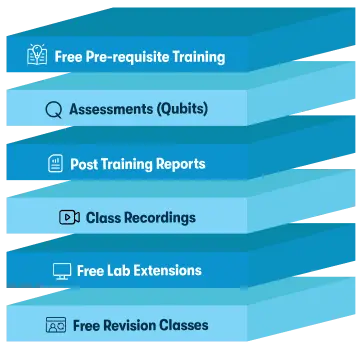We're open through the holidays to support your upskilling goals — Which training do you want to book?
We're open through the holidays to support your upskilling goals — Which training do you want to book?
Unable to find what you're searching for?
We're here to help you find itVMware vSphere: Install, Configure, Manage [V8] Course Overview
The VMware vSphere: Install, Configure, Manage [V8] course is a comprehensive training program designed to equip learners with the skills needed to set up, manage, and optimize VMware vSphere 8, which includes VMware ESXi™ and VMware vCenter Server®. This course covers the installation, configuration, and management of vSphere infrastructure, which serves as a foundation for any software-defined data center. Participants will learn about virtualization concepts, vSphere features, the creation and management of virtual machines, vSphere clusters, storage and networking configurations, resource management, and Maintaining the vSphere lifecycle. By completing this course, learners will be able to effectively administer a vSphere infrastructure for an organization of any size, which is essential for system administrators and IT professionals. The course's practical, hands-on approach ensures that students not only understand the theory but also gain experience with the vSphere product suite, making them valuable assets in their roles.
VMware vSphere 8 represents the latest evolution in enterprise virtualization technology, delivering enhanced performance, security, and operational efficiency for modern data centers. VMware vSphere is VMware's virtualization platform, which transforms data centers into aggregated computing infrastructures that include CPU, storage, and networking resources. This comprehensive guide provides IT professionals with expert insights into vSphere 8 installation, configuration, and management practices essential for successful enterprise deployments.
vSphere manages these infrastructures as a unified operating environment, and provides you with the tools to administer the data centers that participate in that environment. The vSphere 8 ecosystem consists of core components that work together to deliver enterprise-grade virtualization:
ESXi Hypervisor: Type-1 bare-metal hypervisor providing hardware abstraction
vCenter Server: Centralized management platform for infrastructure control
vSphere Client: Web-based management interface for administrative tasks
vSphere Lifecycle Manager: Automated infrastructure lifecycle management
The vSphere Lifecycle Manager and vSphere Client are packaged with vCenter Server, streamlining deployment and ongoing operations.
VMware ESXi Installation and Setup describes how to install and configure VMware ESXi™ through multiple deployment strategies:
Interactive Installation: Manual deployment suitable for small environments
Scripted Installation: Automated deployment using kickstart scripts for consistency
Auto Deploy: Network-based stateless provisioning for enterprise-scale deployments
UEFI Boot Support: vSphere 8 supports booting ESXi hosts from the Unified Extensible Firmware Interface (UEFI)
The structured installation approach includes:
Pre-Installation Validation
Hardware compatibility verification
Network infrastructure assessment
Storage system preparation
Installation Execution
use your OS available tool which supports creation of VMware bootable device to create an installation medium
Accept VMware License Agreement if you want to install
Select the disk where ESXi 8 will be installed to. It will create a datastore on the selected disk which can be used for Virtual Machines as well
Post-Installation Configuration
Network configuration and security hardening
Authentication integration
Backup and monitoring setup
Purchase This Course
USD
View Fees Breakdown
| Flexi Video | 16,449 |
| Official E-coursebook | |
| Exam Voucher (optional) | |
| Hands-On-Labs2 | 4,159 |
| + GST 18% | 4,259 |
|
Total Fees (without exam & Labs) |
22,359 (INR) |
|
Total Fees (with Labs) |
28,359 (INR) |
Select Time
Select Date
| Day | Time |
|---|---|
|
to
|
to |
Scroll to view more course dates
*Inclusions in Koenig's Learning Stack may vary as per policies of OEMs
Suggestion submitted successfully.
Koenig Learning Stack
Inclusions in Koenig's Learning Stack may vary as per policies of OEMs



